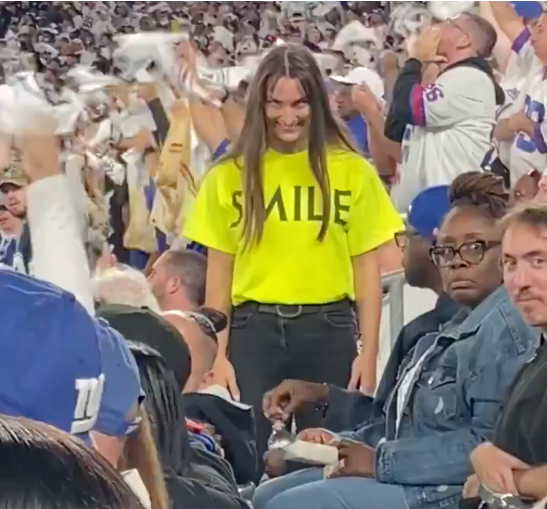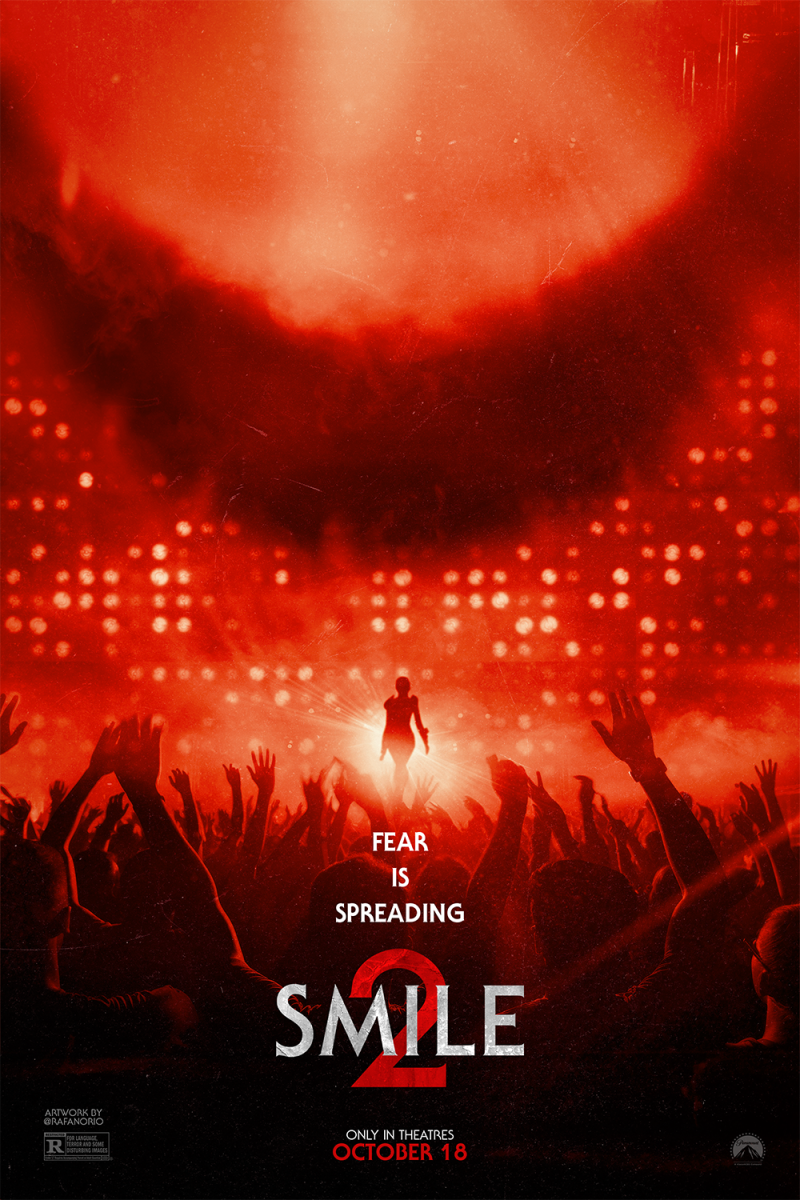“Smile 2” made $23 million in the box office, just slightly beating its predecessor, “Smile,” by $400,000. Despite its massive success, it does not deserve the financial prosperity it received. It was a continuation of a movie that should have been a standalone.
“Smile” (2022) is a psychological horror film made by Paramount Pictures. It follows a psychologist named Rose Cotter who witnesses a patient commit suicide in front of her. As Rose’s mind starts to unravel, she finds out that a demon is pushing her to this insanity as it slowly takes over her mind.
There are only three ways to deal with the demon: kill someone in front of a bystander, kill yourself in front of someone, or to die alone. In the end of the first “Smile,” she attempted to die alone, but her ex-partner, Joel, went back into the house, saw Rose, and the demon passed onto him. The film did have good commentary on how people who work in high-stress professions can break under the pressure; however, it would have been more impactfu
l if Rose died alone and broke the cycle of the demon, but instead the producers set up the sequel.
The next movie begins with Joel attempting to pass on the demon by killing a criminal in front of the criminal’s brother, but he passes it onto an innocent bystander; Joel then was chased out of the house, hit by a car, and died. The demon is passed onto Skye Riley, a pop star who is making her resurgence after a year out of the spotlight due to a car crash (not the same car that hit Joel). Skye struggles to cope with the demon while simultaneously preparing for her new tour. The main theme of the movie is coping with the strife of stardom and constantly being in the public’s eye, but the theme was addressed in the same exact way that it was in the original “Smile.”
The sequel essentially repeats the first film. It follows the same pattern of someone getting infected, hallucinating for a while, then failing to defeat the demon and passing it onto another person.
It had no coherency, which does give the movie an uneasy feeling, but it leaves the viewer feeling as if they watched a two-hour long hallucination. One major plot point is that the demon makes people hallucinate, but this movie took it too far, with *Spoiler Warning* a majority of the movie being revealed to be a hallucination.
Not to mention, the trailer of the film is misleading and spoils the end. Since the ending is shown in the trailer, it makes it appear as if the events of the movie will take place after the trailer, not prior to it. The entire movie was a pointless filler meant to stretch out a series even longer just for profit.
The issue with the current state of the horror genre is repetition. The most popular horror movies being created now come from the continuation of already established series (“Planet of the Apes,” “Alien,” “A Quiet Place,” “Scream,” etc.). They leave no room for real creativity or innovation. Despite some indie film studios, such as A24, releasing new and creative horror films such as “Heretic,” “Talk to me,” or “I Saw the TV Glow,” innovation is not the norm in today’s horror industry. “Smile 2” is a culmination of this; it reused a decent standalone movie created an unoriginal sequel for the sake of profit.

The beauty of great horror films is that they can be a reflection of people’s fears at the time. For example, “The Thing” was a reflection of the fear of communism spreading in the United States. “Metropolis” reflected the fear of industrialization, authoritarianism, and classism. Now, most horror is a reflection of a movie’s previous financial success. They play on familiar tropes and horror antagonists instead of creating new and novel ideas.
“Smile 2” was the pinnacle of everything that is wrong with the current horror industry. Instead of prioritizing its message or creating a new and interesting plot, it followed every tired trope in Hollywood, such as cheap jump scares, gore without plot, and killing off characters for shock value. “Smile 2” is undeniably a film that will leave horror fans frowning.
